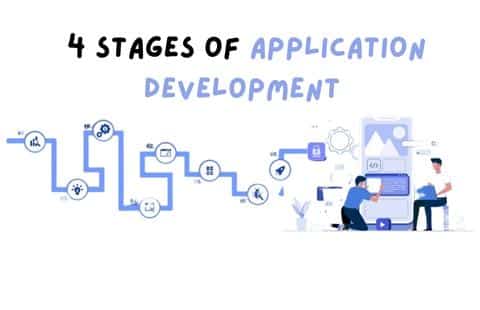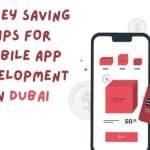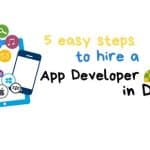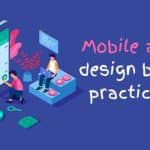- December 20, 2022
- techAdmin
- 0
What are the 4 stages of application development?
The application development process is divided into four phases by Pocket App: design, development, and support before creation. We can handle each stage separately using a modular approach, but completing a project from beginning to end is our most significant value.
In light of this, we have application development guidelines to guide you through the entire procedure, outlining the functions of each stage and the outcomes for clients.
The four stages of Application Development
- Pre-Design
- Design
- Development
- Support
Stage 1: Pre-Design
Pre-design is the first step in the application development process, where we turn a brief of thirty pages or one line into a workable strategy. The appropriate technologies, success metrics, and the product’s intended audience and purpose must all be identified using this approach.
Pre-design helps you get off to a good start when designing and developing your app and ensures a high-quality finished product.
What happens during the pre-design stage?
The first step in the pre-design process is identifying the project’s fundamental concept and goal. We start with a workshop to accomplish this.
This is a one- or two-day collaborative session in which the clients can access our entire team’s expertise, including UX specialists, business analysts, and our senior team, who bring more than 30 years of mobile experience to the project.
At this point, we recommend that clients employ a similar cross-disciplinary strategy and include members from marketing and legal. Any department that intends to have a say in the project. If the app is internal, it’s also a good idea to bring someone to use it on the ground.
This stage ensures that all stakeholders have a say before the process starts.
A phase of research and analysis precedes the workshop. We do this by creating user personas, which help us comprehend the app users’ objectives and challenges. Additionally, we investigate competing apps on the market.
This stage is harder for internal apps that aren’t on the app stores than for apps that are for customers. However, looking at apps from different industries with similar user goals, you can always find lessons and apply them.
Do I need a pre-design phase?
It’s common for people to believe they can jump right into the design process, but doing so could result in a poor outcome. Problems may arise further along the process if all ideas come from a single source who has yet to do all the research or consider all the options.
What information must I have before beginning pre-design?
We need to know what you want the project to accomplish before we can begin.
Ideally, your brief should have identified the issue, what they believe mobile can do to address it, and a rough idea of the goal. At the very least, it should be aware of the problem you want mobile to handle.
Frequently, you can summarize this stage in a single paragraph. It might be as straightforward as, “we lose a lot of money using a paper-based process for this thing;” We want to make it digital.
We can help close the gaps, but first, we need to know where they are. We can begin finding a solution to that issue once we have it.
Stage 2: Design
You are ready to design once you have finished the pre-design phase and have the complete approach recommendation.
What results did the design phase create?
You will have a complete user experience wireframe at the end of the design phase; designs for all of the app’s screens, possibly separated for the Android and iOS versions; and an interactive prototype that can be installed on any number of devices.
Before we build the final product, we can use the prototype to understand how the app will feel and move between screens. It can also be used to pitch the last app idea to investors or sell it up the chain within your company.
Regardless, compared to a verbal explanation and a few screens, communicating the concept to developers is much simpler when you have a working prototype.
What factors should I take into account during the design phase?
Desk research can make a big difference. With a few online searches, you can quickly understand what is available in similar apps from rivals and other industries. This can help you figure out what to expect from your app, what might be possible, and where there is a need in the market that you want to fill.
Learn to distinguish your opinions from those of your followers. Clients frequently provide the most input during the design phase. After all, everyone has their idea of how an app should look based on their experiences, even if they have no technical background.
Even though this is a collaborative process, it is essential to separate your feelings from the needs of the end users. Consider the portable form of your image plan. Big businesses usually have good brand guidelines, but they may have yet to consider how those apply to mobile.
Even though some design elements look great in print or on the web, they only work on a smaller mobile screen.
Stage 3: Development
What do I need to begin development?
We frequently receive inquiries regarding the minimum level of app security. The answer depends on your project’s specifics. There is no one industry standard for app security; therefore, think about: How private is the information involved?
On the off chance that it’s an easy application simply putting away a rundown of what the client has in their cabinet, it’s likely not a huge concern. Yet, it should be essential if you’re taking care of individual information or if it’s an internal application that processes economically delicate information.
Be aware of how your customers are likely to view the data, even if it isn’t susceptible, like names and addresses, which can access through other means.
If you want your app to pull a list of nearby restaurants serving a particular kind of food, for example, you need to think about where that information will come from and how you will access it. Dynamic functions require a reliable data source.
Remember that legacy systems can be a problem, even if the data is internal. They weren’t made to handle the number of calls that a service based on customers can make; they may even have existed before the internet in older businesses.
In most cases, our approach is to construct a middleware layer that acts as a bridge between client servers and the application and is designed specifically for communication with the app. Without requiring an overhaul of existing systems, this will pull the data regularly and make it available to users in the app.
Recognize the distinctions between the initial and final releases. Iteration is an essential step in the process. As a result, only assume that some versions you see are fully functional. It’s better to see the early versions than to wait until the end if you want to have a say in the development process.
You can swap out functionality on a modular basis, as long as it is switching like for like in terms of complexity, as part of the agile methodology, if your priorities change throughout the project—which they most likely will.
Stage 4: Support
After completing each stage in this guide, you should now have a live app that your target audience has started using. You will enter the fourth and final stage, support, at this point.
The principal thing to address during the help stage is any bugs or getting teeth issues. No matter how much testing has been done during the development phase, something unexpected, such as using an old device or an older OS, will always happen. As they arise, these issues must be addressed.
When significant new devices are announced, or an OS update occurs, the next phase of support that can be planned is next. Most minor updates make no issues with an application; however, when there are more extensive, more significant changes, these can cause problems.
It is critical to guarantee that you permit assets for these events when you set up your application advancement financial plan.
ZabTech IT Solutions, the best application development service provider in Dubai, We hope that the four stages we suggest for any mobile application development project are helpful to you. It is more required than having a thought for an administration that you might want to present simply by building an application.
However, your app idea can develop into a robust and successful solution that serves your audience, internal or external, for many years with the proper planning, processes, and resources from our expert mobile application developers. To know more our Mobile application development courses, Contact us.



